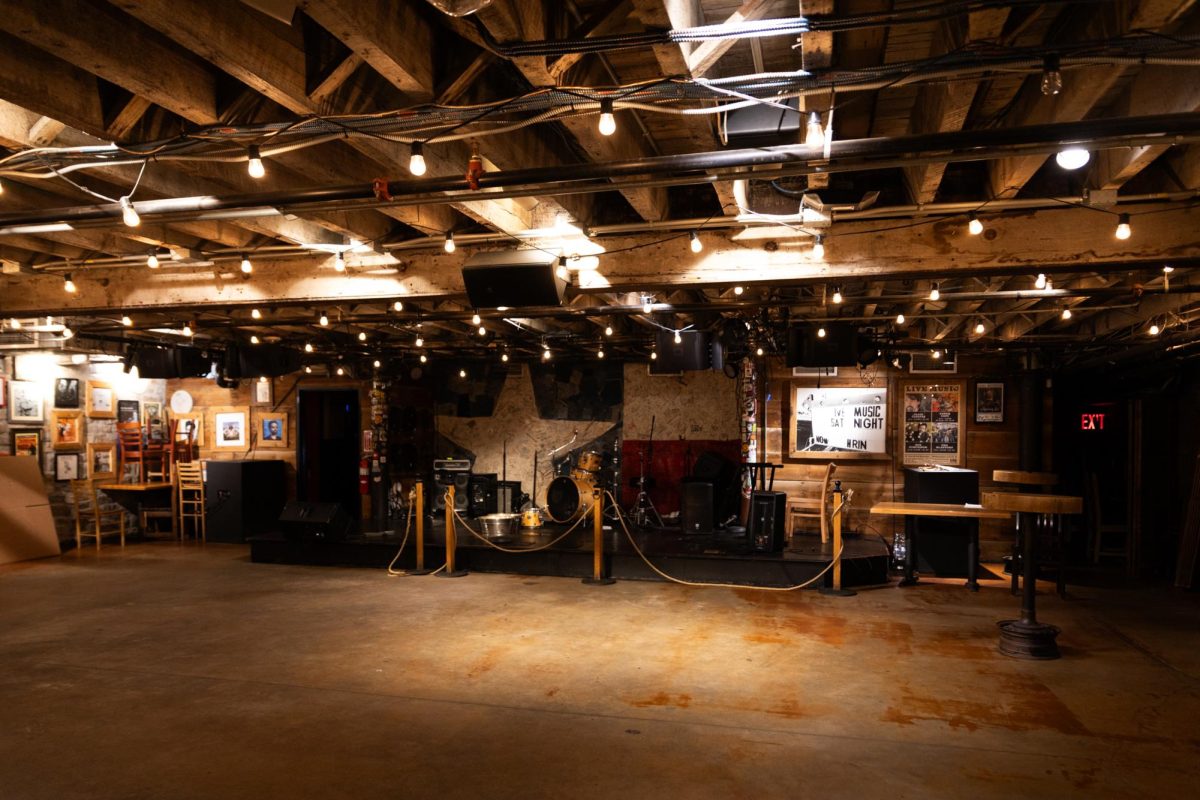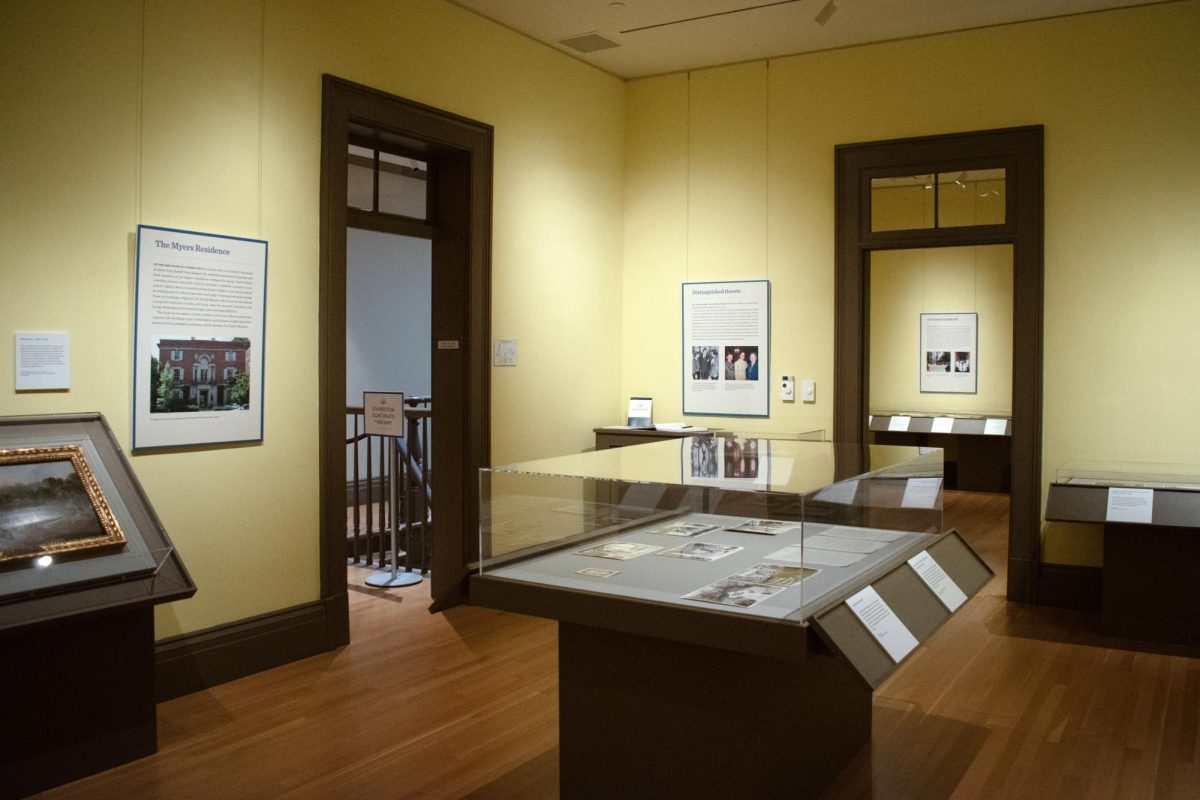While students ascend the stairs of Gelman Library during midterm season, members of GW Club Climbing are scaling rock walls.
Clad in cargo pants and glove-like grippy shoes, a cohort of GW students take the Metro’s Blue Line four times a week to mount the climbing walls of Crystal City’s Movement Gym. Established in spring 2021, GWCC is composed of a competition team — whose six members this year practice thrice weekly — and a recreational team, whose around 50 consistent members make up the bulk of the group and practice at least twice a week.
During a typical recreational team practice, which occur Monday and Thursday nights and Friday and Saturday afternoons, members of GWCC scatter among the gym’s blue and gray slabs of climbing walls dotted with rainbows of plastic rocks. The climbers take advantage of Movement’s 217 climbing routes of varying difficulty levels that span the gym.
Last Monday, after kicking off practice with group icebreakers like “Who is your favorite superhero?” executive board members took turns leading the team through stretches and warm-ups like jumping jacks and arm circles. The group then bouldered, in which climbers scale shorter walls without ropes or a harness.
GWCC President Cal Feger, a senior majoring in public health, said she first started climbing in the D.C. area after looking for an athletic but noncompetitive organization to join. She said the group works to nurture amateur climbers by encouraging members to partner with others at their experience level during practices.
“We have built a climbing community but also a community beyond climbing where people can feel comfortable just getting to know one another,” Feger said.

The average climber has to pay Movement’s $112 monthly membership fee, but GWCC works with the gym and uses its Student Government Association funding to offer $56.54 a month subsidized memberships to 35 students each year and $96 a month memberships for the rest of the club. Feger said about 120 people tried out for the discounted rate this year, and to qualify, interested climbers had to attend two days of tryouts mainly judged on dedication, sportsmanship and enthusiasm, not skill. Subsidized members are required to come to two of four weekly recreation team practices, Feger added.
Feger said practice leaders create goals based on the climbing team objectives that GWCC members share each semester, like flexibility and footwork.
“There’s definitely preferences on the team, but we want to give everyone that option to do everything, so we have the four practices,” Feger said. “Two will be bouldering days, two will be top-rope days.”
Senior Reilly Stilwell, the organization’s co-social chair and an international affairs and environmental studies major, said there is often downtime between climbs as members take turns sharing the wall, so the sport is inherently social — which for her, has been the carabiner securing her in GWCC’s harness.
“The social aspect, it’s not what drew me in,” Stilwell said. “Initially, it was more for the sport, but it’s definitely what kept me there.”
Stilwell said as the GWCC climbers take to the mats already studded with regular rock wall fans at Movement, non-GW gym-goers will often offer climbing advice to students and vice versa.
Stilwell said the GWCC community also extends beyond the rock wall, with the team hosting movie nights, potlucks and mixers with other club sports like GW Club Boxing and Brazilian Jiu-Jitsu. She said the group has also partnered veteran members of GWCC with newer climbers in a “pebble and boulder” pairing, where member duos bond through scavenger hunts and bingo games.
“It’s a really good way to just get groups together and get people to meet people that they wouldn’t necessarily talk to otherwise,” Stilwell said.

GWCC Vice President Raya Davidson, a junior and political science student, said recreation team members get to showcase their skills at an annual D.C. region recreational competition with American and Georgetown universities hosted by GWCC at Movement in the spring. At last year’s competition — the second year of the tradition — Davidson said there were about 75 climbers across the trio of local universities.
With the competition split into beginner, intermediate and advanced divisions, Davidson said members of GWCC were “confident enough” they would take home the first place trophy, which they had purchased from Amazon. But the team ended up coming in third with American University taking home the gold, she said.
“It was just like an incredible experience, being able to interact with their teams, being able to just like have a lot of fun with it and just connect,” she said.
Competition team member Hannah Hostalka, a first-year studying political science and environmental studies, said she wanted to join GWCC to continue training with “other strong people” after climbing competitively with a national youth climbing group for about four years. She attended two days of tryouts to make the competition team, which attends about three collegiate competitions in the mid-Atlantic region hosted by USA Climbing per semester.
“It’s very nice to be able to meet everyone initially and kind of feel out the vibe of the team before you actually have to commit to it,” Hostalka said.
She said as the team’s first competition in November approaches in Richmond, Virginia, she plans on honing skills judges look for like dynamic movement, a method of using one’s momentum to propel oneself further up the wall.
Recreation team members like Lucas Scott, a senior majoring in philosophy, said the technical and collaborative skills he learned from GWCC have popped up in outdoor climbs unaffiliated with the team, from safety tips to preclimb small talk. Scott said his favorite solo climb was at Montserrat, a 4,000-foot grouping of stone pillars in Barcelona, Spain, which he took on when studying abroad last semester.
Scott had indoor climbing experience before joining the GW team, but he said he learned the basics of outdoor climbing from GWCC friends. Taking to nature on non-GW affiliated climbs helped him feel confident in scaling Montserrat, he said.
“People here, just that I met here, had gone outside with me, just sort of outside the club as friends, and they basically showed me the ropes of how to climb outside,” Scott said. “And then I was able to do that with a bunch of people from around the world.”













